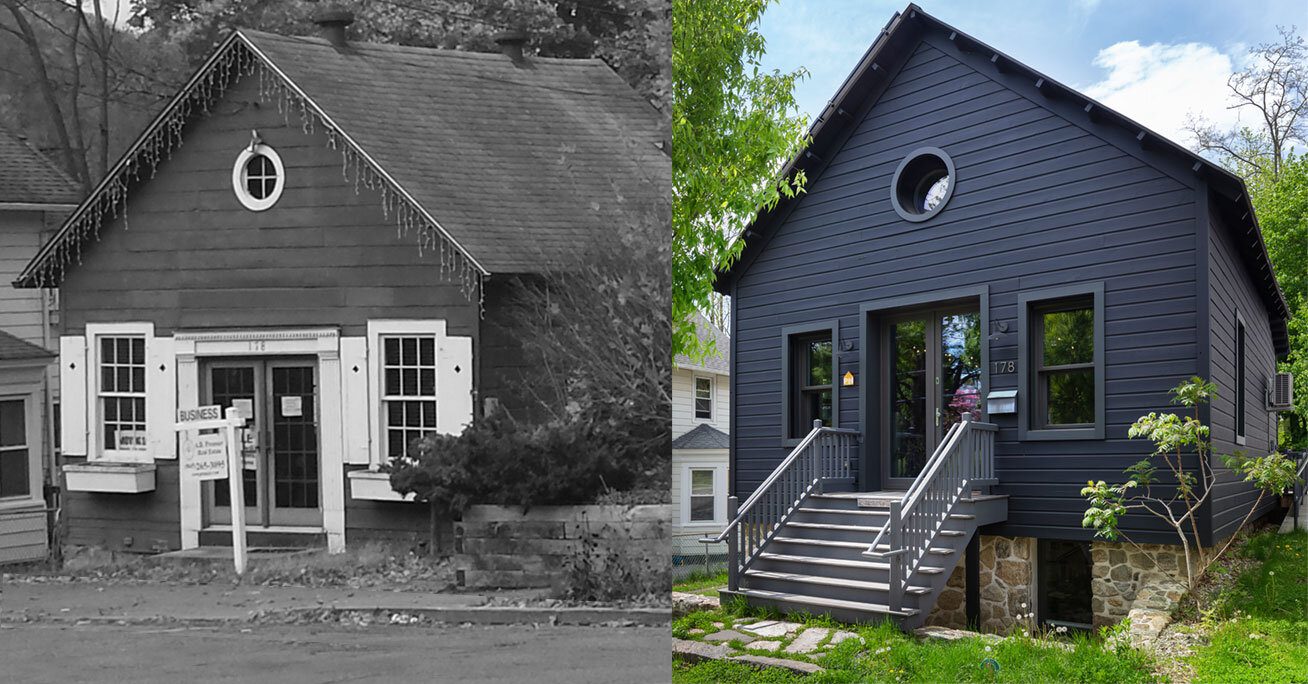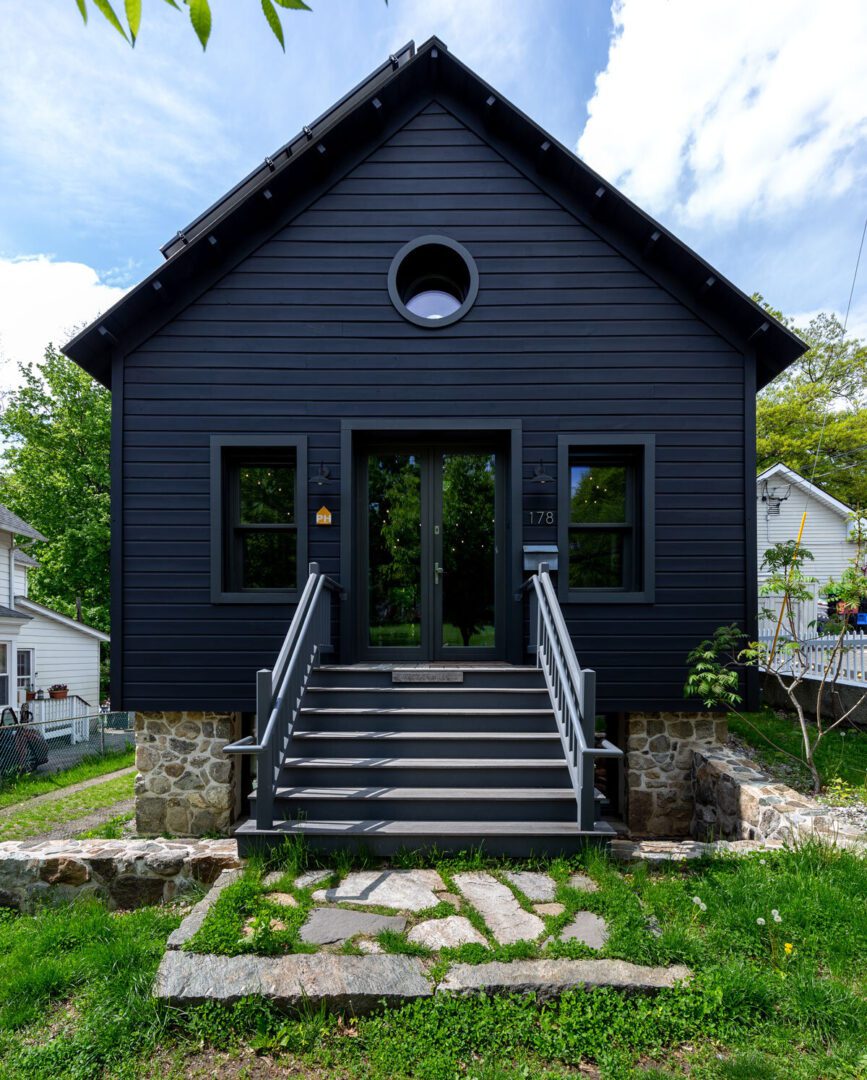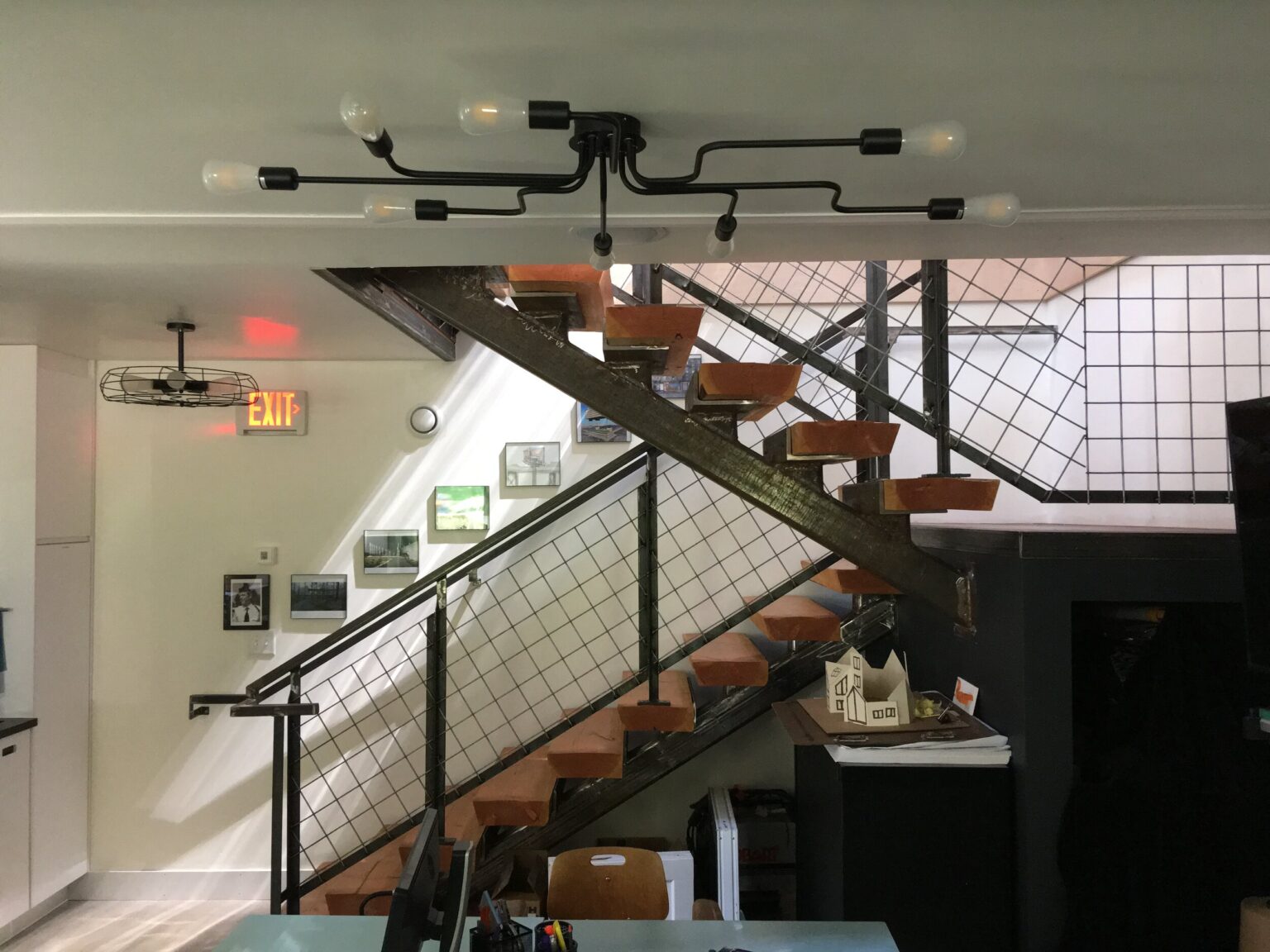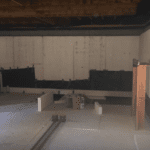Using Recycled EPS Foam Panels to Save Energy and Reduce Carbon Footprint
In the picturesque Hudson River Valley, a remarkable transformation is underway, led by the visionary team at River Architects. Their latest project, the renovation of an 1840’s blacksmith shop in Cold Spring, NY, into a Net Zero certified architectural studio, is a testament to their commitment to sustainable design and environmental stewardship.

Before and after net zero renovation of 1840’s blacksmith shop to architectural studio courtesy of River Architects PLLC
A Deep Dive into Sustainable Renovation
At the heart of this project lies the innovative use of reclaimed EPS foam panel insulation, a choice that not only exemplifies energy efficiency but also reflects a deep-rooted commitment to reducing the environmental impact of construction materials.
The Role of Reclaimed EPS Foam Panels
James Hartford of River Architects shares insights into this groundbreaking project. The renovation involved the meticulous placement of two layers of reclaimed 5” thick EPS foam panels along the interior basement foundation walls. This not only provided exceptional insulation but also aligned with the firm’s ethos of minimizing carbon footprints in construction.
Beyond Insulation: A Net Zero Vision
The project extended beyond mere insulation. The foundation was rebuilt and deepened, creating more space for River Architects’ studio offices. Below the floor slab, 10” of insulation was added, and high-strength foamglas insulation was strategically used to prevent thermal bridging. A vapor barrier between the concrete block walls and the EPS panels ensured airtightness and moisture control.

Net zero renovation of 1840’s blacksmith shop to architectural studio courtesy of River Architects PLLC
A Commitment to Passive House and Net Zero Standards
River Architects, known for their focus on passive house and net zero projects, demonstrates through this project how reclaimed materials can play a pivotal role in sustainable architecture. Their practice, spanning from Connecticut to New Jersey and Pennsylvania, consistently emphasizes energy conservation and environmental responsibility.
The Environmental Impact of Reclaimed Materials
The choice of reclaimed EPS foam panels, sourced from Green Insulation Group of Worcester, MA, highlights a crucial aspect of sustainable building practices. These panels, originally from a roofing installation, represent a significant saving in energy that would otherwise be used to produce new panels. Moreover, the reduction in the use of blowing agents, known for their high Greenhouse Warming Potential (GWP), underscores the project’s alignment with global environmental goals. If you want to know more about the embodied carbon in construction materials, please have a look at this non-paywalled article at greenbuildingadvisor.com.
A Model for Future Projects
River Architects’ approach in the blacksmith shop renovation serves as a model for future energy conservation projects. By repurposing materials with high GWP potential and integrating them into modern, energy-efficient designs, they set a new standard in sustainable architecture.

Net zero renovation of 1840’s blacksmith shop to architectural studio courtesy of River Architects PLLC
Pioneering a Sustainable Future
The transformation of the 1840’s blacksmith shop by River Architects is more than a renovation; it’s a bold statement in the world of sustainable architecture. Their use of reclaimed EPS foam panels in achieving Net Zero standards is a beacon of innovation and environmental responsibility, paving the way for future projects that prioritize our planet’s health alongside architectural excellence.
What Client Say About Us
“We are an architecture firm that specializes in Passive House, and used Green Insulation Group for the basement insulation of our on Phius Certified office building. We were really pleased with the materials GIG supplied to us, exactly what we needed. Specifying low-embodied energy products is really important to us, and GIG helped us meet that goal. Not only is it low embodied energy material (we are giving reclaimed materials a second life by using it- it would have been sent to the dump or incinerator otherwise), reclaimed EPS from GIG saved us considerable money over buying new. We continue to recommend them to clients and builders.”
– JAMES HARTFORD
Principal/Architect
Image source: https://www.riverarchitects.com/ra-portfolio/rastudio



